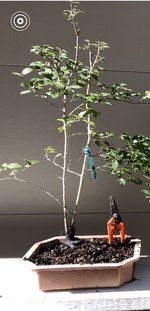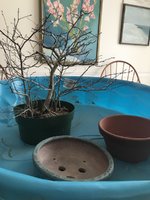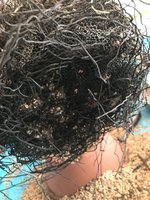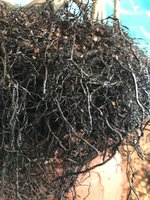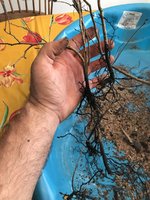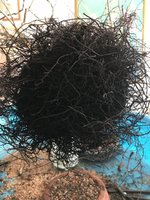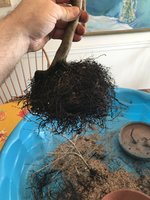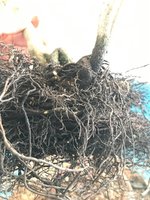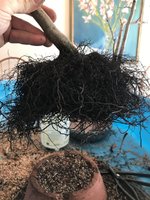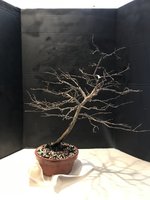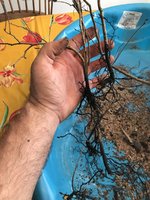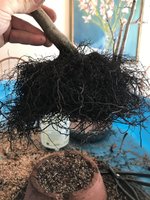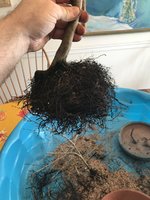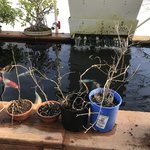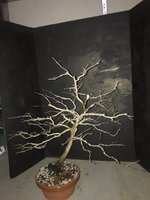Princess persimmons are in the genus Diospyros. Virtually all species in this genus are dioecious, meaning individual plants will be male or female. Flowers of male plants produce pollen only, no fruit, no seed. Flowers of female plants produce no pollen, they do have stigma, and ovaries, and can produce fruit with seed when pollinated. Normally several different bee species, especially solitary carpenter bees, solitary orchard bees, and ground dwelling sollitary mason bees are the original wild pollinator insects. Honeybees can do the job in modern orchards, if pollination is desired. Key point, in the wild form, no pollination, there will be no fruit. If you want fruit on wild type princess persimmons, you must have both male and female plants in bloom at the same time.
This sounds like male & female in mammals, but the genetic source and resulting mechanism is quite different from the mammalian model. The way sex works in Diospyros allows some interesting variation.
For Diospyros rhombifolia, the Princess persimmon, the normal condition is that if a female flower does not get pollinated, it will dry and fall off without producing fruit. However the genetics allow that a small percentage of every 100 wild type female plants, there will be a few females that will produce seedless fruit without being pollinated. This variant, is heritable. So in Japan there are in cultivation genetic races (selected breeding groups) of D. rhombifolia that a high percentage of the females produced from seed will flower and go on to make seedless fruit if no male pollinator is present. Princess persimmon from the wild in Japan, most females will be barren without a male pollinator. But Princess persimmons propagated in Japanese bonsai nurseries have a high percentage of females that produce seedless fruit without a male, because it is a genetic trait that can be selected for. Both in Japan and USA, propagation of select clones by grafting, cuttings, or air layers are possible, and were done to make these unusual female plants available.
These select female cultivars, that make seedless fruit have been imported into the USA by people like Bill Valavanis, Julien Adams, and many others over the years. So when you buy a female Princess persimmon from a bonsai artist or propagator, if they tell you that you don't need a male to get fruit, this is why.
Seed from bonsai propagators will likely have a fair percentage of females that can make seedless fruit.
If you buy seed from "seed companies" for instance, Sheffield Seed Company, they will normally sell wild type seed, meaning that for seed sourced from these people, who specialize in supply wild type genetics, and are not at all bonsai orientated, these will produce females that will generally be barren without a male pollinator. Yields for wild type seed are anywhere from 70% male, 30% female to 50% male and 50% female. Somewhat depends on their source.
The condition described for Princess persimmon more or less applies to all persimmons. Diospyros kaki is one of the worlds oldest cultivated fruits, and quite a few seedless female cultivars have been selected & propagated over the 3000 years it has been in cultivation.
In North America, Diospyros virginiana, the American persimmon, there are a small number of seedless fruit when not pollinated cultivars of the American persimmon, I have 3 grafted plants in my back yard that I have hoping will reach fruiting size soon. 'Yates', 'Weber' and 'Prok' are the three I'm testing. I will report the minute I have success. I also have a few American persimmon seedlings, one 4 year old, most are 3 and 2 years old, that I am raising with intention of moving them into being bonsai. So far nothing in a pot has bloomed. My oldest tree was planted in the ground and began producing fruit at 7 years of age in Southern IL. Unfortunately, there are wild males in the woods nearby, so all the fruit has seed.
I think the North American native persimmon, Diospyros virginiana, is a species that should be looked into for medium to large size bonsai. It is winter hardy into southern eastern Canada, so pretty much all of zone 5 in North America. For people in zone 6 and warmer winter protection is minor or even unnecessary. Fruit is smaller than Kaki, between 1 and 2 inches in diameter. And seedlings begin developing bark at about 7 years of age, and develop a unique for Diospyros, heavy alligator checked bark once over 20 years of age. The heavy plated bark would be very attractive if you could get an older trunk growing. A tree around 3 feet tall, and "sort of" literati trained would look great with a few fruit hanging well after leaf drop in autumn, with the heavy bark. A great winter silhouette species.

